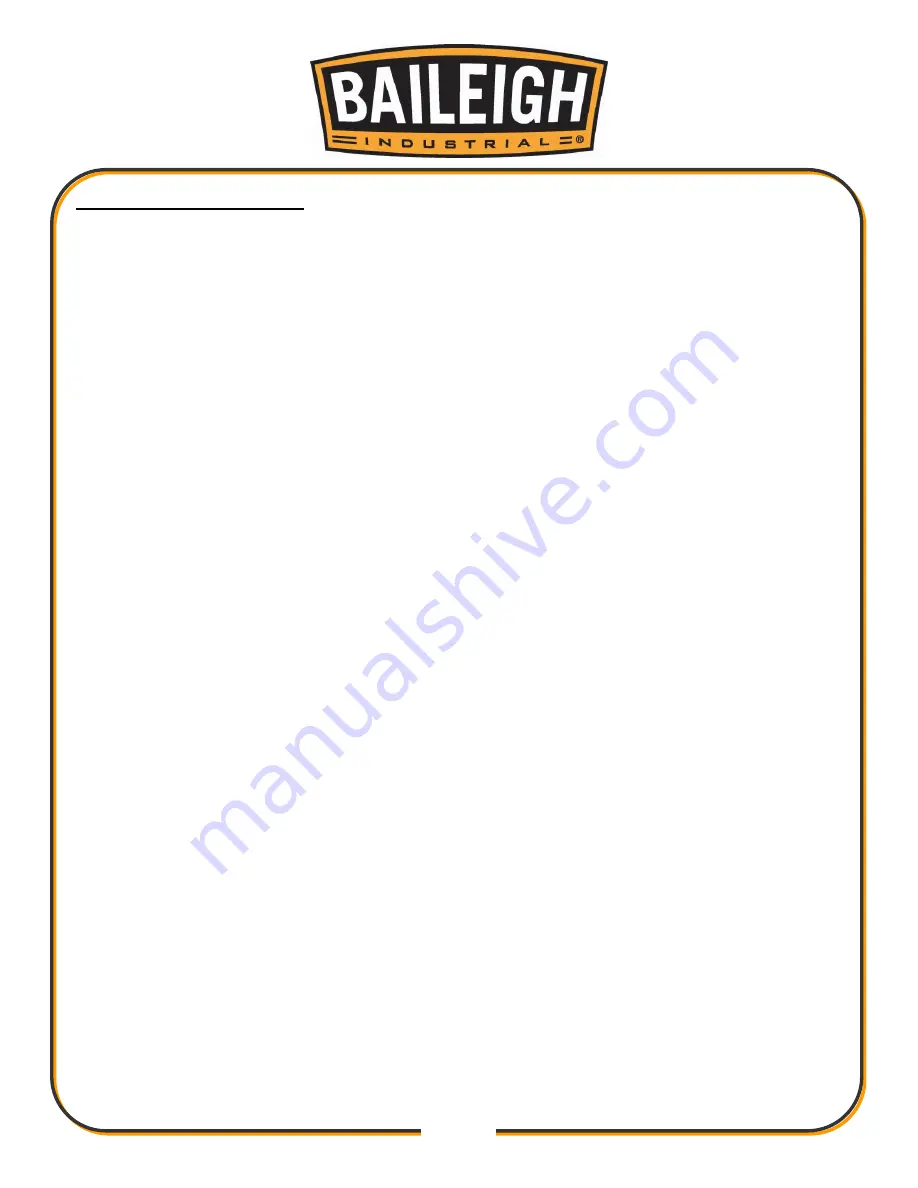
43
43
CUTTING RATE CONTROL
Cutting rate is defined as the number of square inches of material cut in a minute. The cutting
rate is influenced by your choice of bandsaw blade, your cutting fluid, the blade speed selected,
the feed pressure selected, the feed rate selected as well as the size, shape and machinability
of the material you are cutting. Controlling the cutting rate is really controlling the chip size and
by effectively controlling the chip size you not only control the cutting rate but also you
significantly impact cutting tool life, accuracy and finish as well.
We have addressed blade and cutting fluid selection elsewhere in this manual. Blade speed
should be determined by referring to information supplied to you by the company from which
you purchase your bandsaw blades. The seller of the bandsaw blades should also be able too
provide you with a chart that indicates the cutting rate range you should expect when using their
brand of bandsaw blades on various types and sizes of material. Since each manufacturer of
bandsaw blades differs in the tooth geometry they use (there are other differences as well), it is
not possible for us to provide you with this information unless you have selected Peerless brand
blades and cutting fluids.
Band sawing is still as much art as it is science. There are so many variables that it is virtually
impossible to cover even most of the possible combinations of factors. However, in general you
want to cut according to the cutting rage indicated by your bandsaw blades manufacturer’s
recommendation.
To accomplish this, you should:
•
Use the type blade and blade pitch recommended by your bandsaw blade manufacturer.
•
Determine the proper blade speed from the information provided you by your bandsaw blade
manufacturer.
•
Determine the desired cutting rate from the information provided you by your bandsaw blade
manufacturer.
•
Set the feed pressure.
•
Set the feed rate.
The feed pressure is controlled by a knob on the operator’s panel and is indicated by the gauge
immediately above the control knob. Although the gauge is calibrated in PSI, it is not reading
pressure exerted against the material. The calibration should be considered an arbitrary
calibration to be used purely as a reference for the operator. This gauge might well have been
just calibrated 1, 2, 3, 4 and so on. The higher the number on the gauge the greater the
maximum feed pressure that will be exerted by the blade on the material. Therefore, the harder
the material the higher the numbers on the feed pressure gauge. For example, a softer material
such as a round aluminum bar might cut well with an approximate 110 setting on the feed
pressure gauge where as a round bar of stainless steel of the same diameter might require a
setting of 175 on the feed pressure gauge.
Содержание BSVT-18P
Страница 18: ...15 15 OVERALL DIMENSIONS...
Страница 19: ...16 16...
Страница 22: ...19 19 GETTING TO KNOW YOUR MACHINE A B C D F E I H G J K L M O P Q R S N...
Страница 40: ...37 37...
Страница 51: ...48 48 ELECTRICAL DIAGRAM...
Страница 52: ...49 49 PNUEMATIC HYDRAULIC DIAGRAM...
Страница 53: ...50 50 NOTES...
Страница 54: ...51 51 NOTES...
Страница 55: ...52 52 NOTES...











































